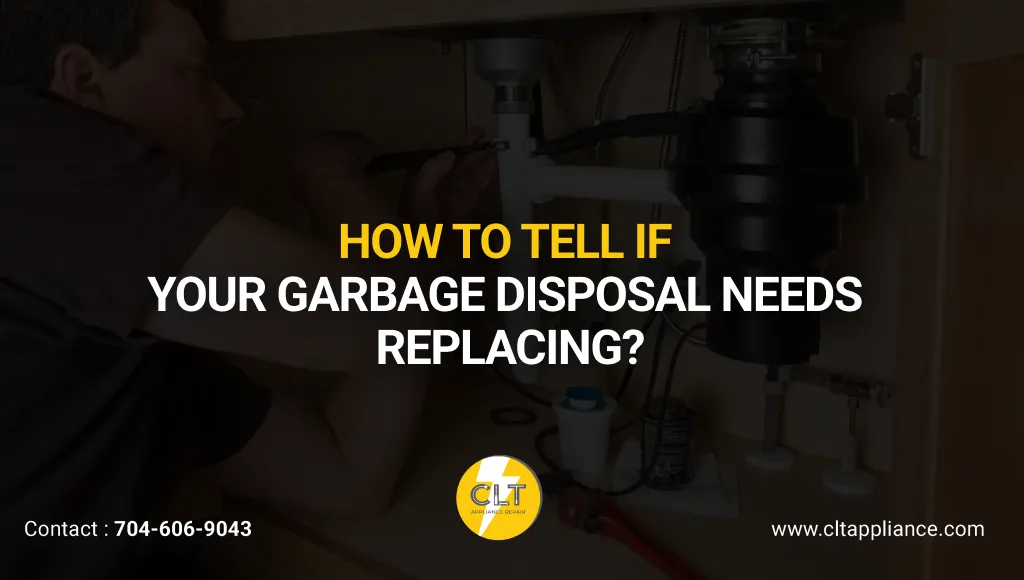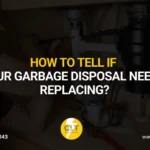Garbage disposals typically serve 8-15 years before requiring replacement. Warning signs include persistent clogs despite proper use, frequent reset button pressing, dramatically slower grinding speeds, and water leaks from the unit’s base. Strange noises like metal grinding or high-pitched squealing indicate internal component failure. Foul odors that resist cleaning suggest permanent contamination. Bottom leaks and motor failures cannot be repaired economically. Modern replacements offer quieter operation and improved durability. Catching these symptoms early prevents emergency repairs and water damage to kitchen cabinets and flooring.
Kitchen disasters always strike at the worst moments: holiday dinner prep, Sunday morning cleanup, or when guests arrive. Your disposal gurgles, refuses to drain, or floods the cabinet below. Most failures announce themselves weeks earlier through subtle warnings. Recognizing when garbage disposal replacement becomes necessary saves you from emergency plumber bills and ruined cabinetry. These hardworking units speak clearly before they quit. The trick is listening before disaster forces your hand.
Get a fast diagnosis from our Charlotte technicians. We’ll tell you honestly whether repair or replacement makes the most sense for your situation.
Schedule Disposal Inspection – 704-750-2737
What are the Clear Signs a Garbage Disposal Needs Replacing?
A garbage disposal needs replacing when it shows persistent clogs, requires frequent resets, grinds food slowly, leaks from the bottom, makes unusual noises, or produces odors that cleaning cannot eliminate. These symptoms indicate internal damage beyond economical repair. Units over 8 years old showing multiple warning signs should be replaced rather than repaired.
1. Recurring Blockages Despite Careful Use
One clog cleared with a plunger seems normal. Weekly drain backups point to a serious mechanical decline. Worn grinding rings lose their sharp edges over the years of service. Food particles are too large for your drain pipes to handle. The disposal appears to work. It runs and makes noise, but its effectiveness has vanished. Undersized units create similar frustrations when household demand exceeds capacity. The unit simply can’t process the volume you’re feeding it.
2. Reset Button Dependency
Finding yourself underneath the sink multiple times weekly signals impending doom. The thermal overload protector activates when something’s dangerously wrong. A worn capacitor struggles to start the motor, drawing too much current and tripping the safety circuit. Aging insulation causes overheating. Dry bearings add friction, forcing the motor to work harder than it should.
3. Grinding Performance Collapse
Yesterday’s efficient food processing now requires endless running water and patience. Sharp cutting edges become rounded surfaces through thousands of grinding cycles. The flywheel spins at rated speed, but actual pulverization has ceased. What you’re hearing is motion without results, theatrical performance replacing functional work.
How to Test Your Disposal’s Performance
Properly functioning units demonstrate:
- Soft scraps disappear within 15-25 seconds
- Fibrous materials processed in under one minute
- Smooth operation without laboring sounds
- Immediate water drainage once grinding completes
Significant deviation from these benchmarks indicates advanced internal wear requiring professional evaluation.
4. Water Appearing Where It Shouldn’t
Puddles under your sink demand immediate investigation. Leak location dictates your response strategy. Upper connection seepage involves mounting hardware or appliance attachments. These peripheral issues typically respond to gasket replacement or proper tightening, manageable repairs with reasonable costs.
Lower body moisture signals catastrophic seal failure inside the grinding chamber. Accessing these internal seals requires complete disassembly, making labor costs exceed replacement economics. The unit’s structural integrity has been compromised beyond sensible repair.
Leak Source Identification
- Mounting flange: Reseal with plumber’s putty
- Discharge tube: Replace the rubber gasket and tighten the clamp
- Dishwasher inlet: New hose or connection repair
- Unit bottom: Internal seal failure demands replacement
- Around the reset button: Shell crack beyond repair
Weekly cabinet inspections catch problems before wood damage and mold colonization occur.
5. Acoustic Warnings of Mechanical Failure
Every disposal generates operational sound. Certain noises announce imminent destruction. Normal function produces a steady humming with intermittent contact sounds as blades meet food debris. Warning acoustics include metallic screeching from bearing surfaces losing lubrication, violent rattling indicating loose components or damaged flywheels, continuous grinding suggesting trapped foreign objects, and electrical buzzing revealing winding shorts or capacitor breakdown.
Critical step: Always verify that no utensils or debris have fallen inside before diagnosing mechanical issues. Remove any foreign material, then reassess. Persistent abnormal sounds after clearing the chamber confirm genuine component failure.
6. Permanent Odor Establishment
Fresh disposals smell neutral after routine cleaning. Persistent stench signals structural compromise. Standard deodorizing includes ice and rock salt blade scrubbing, citrus peel grinding for freshness, baking soda and vinegar chemical treatment, and enzyme-based commercial products. Smells returning within days despite aggressive intervention indicate food trapped in cracks or damaged seals, where bacteria colonize unreachable spaces.
The unit’s physical integrity has failed, creating contamination zones no surface treatment can address. Internal corrosion or fractures have established permanent odor sources requiring complete unit replacement.
7. Total Shutdown or Futile Humming
The switch flips, expecting familiar grinding. Instead, silence or useless motor noise greets you.
Complete Electrical Death
Power interruption is the likely culprit when nothing happens. Check the circuit breaker first, then verify the wall switch function. If electricity reaches the disposal but nothing responds, you’re facing internal wiring failure or complete motor burnout.
Humming Without Grinding
Motor noise without blade movement reveals that electrical energy arrives, but mechanical rotation cannot occur. Several conditions create this frustrating scenario:
- Jammed flywheel from dropped objects (sometimes manually clearable)
- Seized bearings from corrosion and age
- Fractured motor shaft preventing rotation
- Complete mechanical seizure requiring replacement
Attempt reset and manual jam-clearing once. Continued failure after removing obstructions confirms motor or bearing destruction beyond repair economics.
When Repair Still Makes Financial Sense
Not every malfunction demands immediate replacement. Certain conditions respond to targeted intervention at a reasonable cost.
Economically Repairable Conditions
- Mounting Hardware Looseness: Vibration and top-area seepage often stem from loose snap rings. Retightening the mounting assembly or replacing the sink flange gasket resolves this without internal access.
- Peripheral Connection Failures: Dishwasher inlet or drain pipe issues typically need only new hoses or properly tightened clamps. These external attachments don’t involve core disposal mechanics.
- Foreign Object Jams: Accidentally dropped items can be extracted through manual intervention. Most units feature Allen wrench access on the bottom for flywheel manipulation. Rotating the assembly dislodges trapped objects.
- Power Delivery Problems: Tripped breakers or defective wall switches aren’t disposal failures. Verify the electrical supply before assuming an equipment malfunction.
Professional Safety Imperatives
Never attempt electrical work without qualified training. Water creates conductive paths, generating lethal shock hazards. Hard-wired configurations demand licensed electrician intervention. Internal component repairs often approach new equipment costs. Fresh installations with comprehensive warranty protection typically deliver superior long-term value.
CLT Appliance Repair fixes mounting issues, clears jams, and handles connection repairs the same day. Our upfront pricing means no surprises on your bill.
Book Repair Service – 704-750-2737
Anticipated Equipment Longevity
Understanding your unit’s operational history helps predict replacement timing. Age combined with symptom patterns provides definitive guidance.
Service Duration Variables
Quality disposals deliver 8-15 years of dependable performance with appropriate use and care.
Household Demand Intensity
Heavy-use environments with frequent meal preparation and large families accelerate component wear. These installations often require replacement at the 8-10 year mark as mechanisms experience exponentially more grinding cycles. Lighter usage patterns in smaller households or infrequent cooking situations can extend service life well beyond manufacturer estimates. Reduced operational cycles mean proportionally less mechanical stress.
Maintenance Discipline Impact
Regular cleaning protocols, avoiding problematic materials like fibrous vegetables and petroleum-based products, and ensuring adequate cold water flow during operation dramatically extend functional lifespan. Water chemistry affects corrosion rates. Hard water accelerates metal degradation, while softened water can double component longevity.
Age-Related Replacement Logic
- First 5 years: Warranty coverage typically makes repair economically sensible
- 5-10 year range: Calculate intervention cost against projected remaining service
- 10-15 year span: Multiple symptoms justify replacement over incremental fixes
- Beyond 15 years: Any significant malfunction warrants immediate replacement
Equipment approaching design lifespan with developing problems should be replaced proactively. Cascade failures typically follow shortly after initial repairs on aging units.
Contemporary Equipment Advantages
Today’s disposal technology surpasses previous generations substantially. Recent innovations transform basic functionality into enhanced kitchen performance.
Advanced Engineering Features
- Acoustic Dampening Innovation: Modern insulation techniques and refined mechanical design dramatically reduce operational noise compared to older models.
- Anti-Jam Protection Systems: Automatic rotation reversal when encountering resistance prevents blockages. This intelligence eliminates most manual intervention requirements.
- Premium Material Construction: Stainless steel grinding chambers and cutting assemblies resist chemical attack and physical wear far better than traditional galvanized components. Processing efficiency remains consistent throughout extended service life.
- Graduated Power Availability: Contemporary offerings include ¾ and 1-horsepower configurations unavailable in legacy installations. Proper capacity matching to household demands optimizes both performance and reliability.
Efficiency Improvements
Modern designs provide:
- Accelerated processing cycles reduce electricity consumption
- Decreased water requirements for effective operation
- Advanced sealing technology prevents moisture escape
- Enhanced motor protection circuits extending functional duration
Quality modern equipment justifies investment through superior performance, reduced maintenance needs, and extended reliable service compared to aging predecessors.
Strategic Replacement Decision-Making
Beyond obvious failure symptoms, multiple considerations influence optimal timing and choices.
Economic Evaluation Framework
Comprehensive cost comparison requires examining:
- Initial diagnostic and service call charges
- Necessary replacement parts and components
- Labor requirements for repair versus installation
- Warranty protection scope and duration
- Realistic additional service years from each option
Note: If your disposal is over 8 years old and showing multiple symptoms like leaks, frequent resets, and poor performance, replacement typically provides better long-term value than continued repairs. CLT Appliance Repair provides honest assessments to help you make the most cost-effective decision.
Professional Assessment Value
Experienced technicians identify issues invisible to homeowners:
- Comprehensive Damage Assessment: Primary failures often mask secondary deterioration. Professionals evaluate the total repair scope rather than addressing only visible symptoms.
- Realistic Longevity Projection: Extensive service experience enables accurate predictions about repaired unit durability versus new equipment reliability expectations.
- Application-Specific Equipment Matching: Individual household requirements vary dramatically. Professionals consider usage intensity, plumbing configuration, and performance expectations when recommending specific models.
- Installation Quality Assurance: Proper setup prevents future complications, preserves warranty validity, and guarantees safe operation throughout the equipment’s service life. Amateur installation attempts often create problems exceeding original repair costs. Professional service typically delivers better economic outcomes.
Timing Strategy Considerations
Proactive replacement before complete failure offers significant advantages. Emergency circumstances create premium pricing pressure, limit selection to immediately available inventory, risk water damage from continued leaking, and disrupt kitchen function at inconvenient moments. Strategic replacement addresses declining performance during planned kitchen renovations or at your scheduling convenience, rather than under crisis conditions.
Bottom Line
Garbage disposal replacement becomes essential when equipment displays recurring blockages, continuous reset requirements, deteriorated grinding capability, lower body leakage, abnormal acoustics, or persistent contamination odors. Quality units provide 8-15 years of reliable service before these indicators emerge. While peripheral issues like upper connection leaks may accept repair, internal mechanical or seal failures demand complete replacement.
Trust CLT Appliance Repair for Expert Disposal Service
Charlotte homeowners depend on our disposal expertise developed through thousands of service calls. CLT Appliance Repair quickly distinguishes repairable conditions from replacement situations, carrying quality equipment enabling same-visit installation when appropriate. Their commitment to honest recommendations means we’ll always identify economical repair options when they exist. From simple repairs to complete garbage disposal replacement with professional installation, CLT Appliance Repair handles everything.
Charlotte homeowners count on CLT Appliance Repair for same-visit garbage disposal replacement. Our technicians carry quality units and complete installations while we’re there.
Get Assistance – 704-750-2737
Frequently Asked Questions
1. What are the most common signs a garbage disposal needs replacement?
Frequent clogs, excessive noise, persistent odors, water leaks, slow grinding, and the unit requiring constant resets are common signs that your garbage disposal should be replaced. Multiple symptoms appearing together strongly indicate the unit has reached the end of its service life.
2. How long does a typical garbage disposal last?
Most garbage disposals last between 8 and 15 years, and replacement is usually recommended once a unit is near or past this age, especially if problems are frequent. Usage patterns, maintenance habits, and water quality all influence actual lifespan.
3. Can a leaking garbage disposal be repaired, or does it need to be replaced?
If the leak is coming from the bottom of the disposal or the internal shell is cracked, replacing the unit is usually the only solution since repairs are not effective for these issues. Top leaks from connections can often be repaired by replacing gaskets or tightening fittings.
4. Why does my garbage disposal make strange noises or hum?
Unusual noises or humming often indicate internal component or motor damage. If these sounds persist despite clearing debris, replacement is likely needed. Metal grinding, squealing, or excessive vibration suggests bearing failure or motor issues beyond economical repair.
5. Is it normal to constantly press the reset button on my garbage disposal?
No, frequent use of the reset button signals deeper electrical or motor issues and generally means the disposal should be replaced rather than frequently repaired. Occasional resets might be normal, but weekly or more frequent resets indicate serious problems.
6. What should I do if my disposal stops working after trying basic troubleshooting?
If the disposal still doesn’t run after resetting, clearing jams, and checking for power, it’s time to consult a professional or replace the unit altogether. Complete motor failure or seized bearings cannot be economically repaired in most cases.
Author

- John Bennett
- John Bennett is a seasoned appliance repair specialist at CLT Appliance Repair, where he brings over a decade of technical expertise and a strong commitment to customer satisfaction. With a background in electrical and mechanical systems, John has built a reputation for reliable, efficient, and honest repair services across a wide range of household appliances-including refrigerators, washing machines, ovens, and more.









